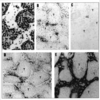| dc.contributor.author | Arnal, JF | fr_FR |
| dc.contributor.author | Elhage, R | fr_FR |
| dc.contributor.author | Maret, A | fr_FR |
| dc.contributor.author | Rami, J | fr_FR |
| dc.contributor.author | Faye, JC | fr_FR |
| dc.contributor.author | Bayard, F | fr_FR |
| dc.date.accessioned | 2012-08-23T13:56:07Z | |
| dc.date.available | 2012-08-23T13:56:07Z | |
| dc.date.issued | 1999 | fr_FR |
| dc.identifier.citation | Arnal, JF - Elhage, R - Maret, A - Rami, J - Faye, JC - Bayard, F, Oestrogènes et athérosclérose : données récentes et perspectives., Med Sci (Paris), 1999, Vol. 15, N° 2; p.212-8 | fr_FR |
| dc.identifier.issn | 1958-5381 | fr_FR |
| dc.identifier.uri | http://hdl.handle.net/10608/1313 | |
| dc.description.abstract | L' effet cardioprotecteur des oestrogenes est assez bien documente mais son mecanisme n' est pas encore clair. L' amelioration du profil lipidique serique des femmes sous traitement substitutif de la menopause compte pour moins de la moitie de l' effet. Ce sont les trois populations cellulaires constitutives de la paroi vasculaire (cellules endotheliales, cellules musculaires lisses, lymphocytes et macrophages) qui constituent les cibles principales des oestrogenes, du fait de la presence de recepteurs des oestrogenes dans chacune d' entre elles, en particulier de recepteurs ER<beta>. Dans la paroi vasculaire saine, les oestrogenes induisent l' activite de facteurs a action paracrine, tels que des cytokines et des facteurs vasoactifs, essentiellement le monoxyde d' azote. L' expression de ces facteurs est aussi modifiee par les oestrogenes dans les conditions de stress physiologique (cisaillement) ou pathologique (atherosclerose, ballon d' angioplastie). | fr |
| dc.description.abstract | Clinical and experimental data underscore the cardioprotective effects of estrogens but the mechanisms involved have not yet been characterized. Estrogen replacement therapy improves serum lipoprotein profiles in postmenopausal women, although this accounts for less than half of the protective effect. The vascular wall thus appears to constitute the main target of the hormone. This review addresses the potential molecular and cellular mechanisms concerned. Estrogens are active in the three cell populations constituting the vascular wall: endothelial and smooth muscle cells lymphocytes and monocytes/macrophages. Functionally competent estrogen receptors, especially the recently cloned estrogen receptor beta, have been identified in all three categories. Activities of paracrine factors including cytokines and vasoactive factors, mainly nitric oxide, are induced by estrogen treatment in the undisturbed vascular wall. Estrogens can also modify expression of these factors induced by the different types of stress that the vascular wall undergoes either physiologically (shear stress) or pathologically (atherosclerosis, balloon angioplasty). Finally the respective roles, in the constitution of the fatty streak itself of the increased biological activity of nitric oxide and of the modified biology of macrophages under estrogen treatment are discussed. [References: 45] | en |
| dc.language.iso | fr | fr_FR |
| dc.publisher | Masson, Paris | fr_FR |
| dc.rights | Article en libre accès | fr |
| dc.rights | Médecine/Sciences - Inserm - SRMS | fr |
| dc.source | M/S. Médecine sciences [revue papier, ISSN : 0767-0974], 1999, Vol. 15, N° 2; p.212-8 | fr_FR |
| dc.title | Oestrogènes et athérosclérose : données récentes et perspectives. | fr |
| dc.title.alternative | Estrogens and atherosclerosis : recent data and future : The future of reproductive medicine | fr_FR |
| dc.type | Article | fr_FR |
| dc.contributor.affiliation | Inserm U. 397, Institut Louis-Bugnard, CHU Rangueil, Bat. L3, 1, Avenue J.-Poulhes, 31403 Toulouse, France | - |
| dc.identifier.doi | 10.4267/10608/1313 | |











